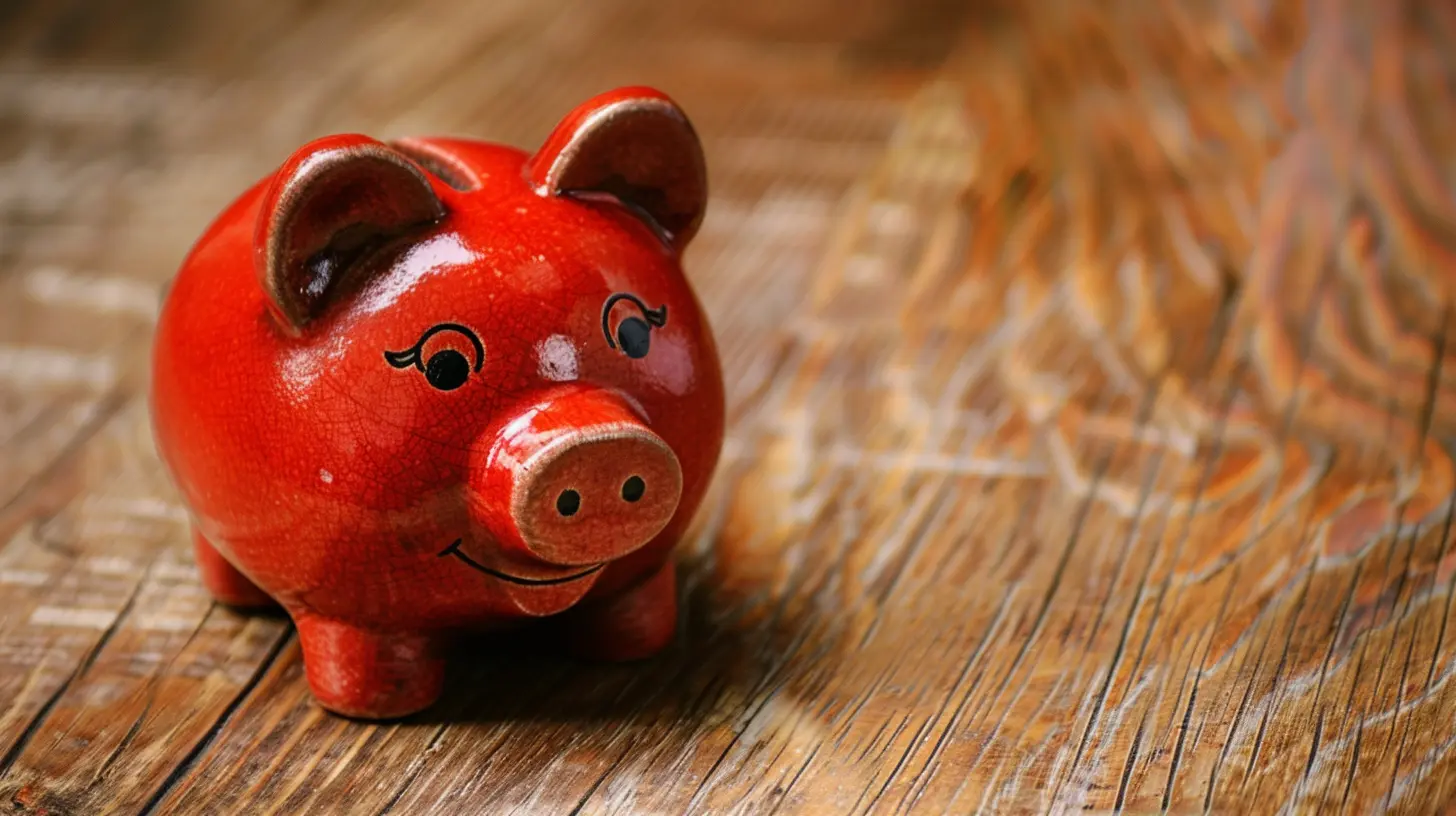Building Your Emergency Fund While Running a Business
15 October 2025
Running a business is like walking a financial tightrope—you're constantly balancing income, expenses, payroll, taxes, and unexpected surprises. Now throw a curveball like a global pandemic, a supply chain hiccup, or a customer backing out of a big deal into the mix. That’s when an emergency fund can feel like a superhero’s cape.
Let’s face it—cash flow hiccups happen even to the best of us. But what if you had a buffer? Something to fall back on when things go sideways? That's where an emergency fund comes in. It's not just for your personal life—your business needs one too.
In this article, we’re going to break down why you need an emergency fund for your business, how to build it even when money’s tight, and where to stash it. Don’t worry, we’ll keep this as painless as possible. Grab a cup of coffee and let’s dive in.
Why Every Business Owner Needs An Emergency Fund
Imagine this: You’ve got orders rolling in, your invoices are out, and your team is humming along. Then suddenly—bam! Your biggest client delays payment. Or your equipment breaks down. Or a key employee quits.How do you keep operations running without hitting panic mode?
That’s where your emergency fund saves the day. It’s like your financial airbag—it softens the blow when unexpected expenses or income drops out of nowhere.
Avoid Business Burnout
Financial stress is one of the fastest ways to burn out as a business owner. But when you’ve got a cushion to land on, you don’t stay up at night pacing the floor with “what ifs.”Stay In Control During Downturns
Markets fluctuate. Seasons change. Economic downturns happen. An emergency fund lets you ride the waves without closing up shop, laying off staff, or maxing out your credit cards.
How Big Should Your Business Emergency Fund Be?
This depends on a few things: your monthly expenses, industry volatility, and risk tolerance.A good rule of thumb? Aim for 3 to 6 months’ worth of operating expenses.
Think about every dollar it takes to keep your business alive each month:
- Rent or mortgage
- Payroll
- Inventory
- Utilities
- Equipment leases
- Taxes
- Subscriptions
- Insurance
Now multiply that by 3-6. It may sound overwhelming—but don’t panic. The key is to start small and build steadily.
The First Step: Know Your Numbers
Before you can build a solid emergency fund, you need to get intimate with your numbers. Yeah, I know… spreadsheets might not be your jam. But trust me, knowing exactly what you spend each month is crucial.Conduct a Financial Audit
Pull up your bank statements, invoices, expense reports—everything. Calculate:- Average monthly expenses (fixed and variable)
- Average monthly income
- Net profit (if any)
- Seasonal fluctuations
Once you’ve got the numbers in front of you, you’ll have a better idea of what your target emergency fund should look like.
Where to Find the Cash When Margins Are Tight?
This is the tricky bit, right? You might be thinking, “I’m barely covering payroll. How do I save anything?”But here’s the thing—you don’t need to stash $50,000 overnight. Even $100 a week adds up over time. Let’s look at some realistic ways to build your fund without hurting your day-to-day operations.
1. Automate Micro-Savings
Set up an automatic transfer from your business checking to a savings account—even if it’s just $25 or $50 a week. Out of sight, out of mind.Think of it like a “set-it-and-forget-it” smoothie blender. Over months, it fills up without you lifting a finger.
2. Trim the Fat
Chances are, there’s a subscription you forgot you had or a vendor you can renegotiate with. Go line by line through your expenses and cancel, reduce, or combine wherever you can.That $200/month you saved on software? Funnel it straight into your emergency fund.
3. Add a New Revenue Stream
Can you offer a new service? Launch a digital product? What about coaching, consulting, or affiliate marketing?Extra income streams not only diversify your revenue but offer a direct path to growing your cash reserve.
4. Delay Non-Essential Spending
Do you really need new business cards this month?Postpone non-urgent purchases and redirect that cash into your reserve. You'll be surprised how much you can save when you curb impulse buys.
Where to Keep Your Emergency Fund
Hold up—don’t just let that money sit in your checking account. That’s too tempting to spend.Instead, park your emergency fund in an easy-to-access but separate account like:
✦ High-Yield Business Savings Account
Good for earning a bit of interest while keeping your funds liquid. Many online banks offer better rates than traditional ones.✦ Business Money Market Account
These offer slightly higher interest rates and limited check-writing, so it’s accessible but not too accessible.✦ Certificate of Deposit (CD)
If you already have a few months' buffer and want to grow your savings further, consider parking a portion in a CD. Just be mindful of maturity dates.Pro tip: Keep your emergency fund totally separate from your tax savings or operating account. It reduces the temptation to “borrow” from it.
How to Know When to Use It (and When Not To)
Emergency funds are for true emergencies, not for buying flashy new furniture or attending that fancy conference in Paris.Ask yourself:
- Is this expense urgent?
- Is it unexpected?
- Will it significantly impact my business if I don’t act now?
If it ticks all three boxes, it’s probably worth dipping into the fund. If not—hold off.
Keeping the Fund Fresh
Once you use part of your emergency fund, make it your number one priority to replenish it.Think of it like this: If your emergency fund is a castle wall protecting your business—every time you dip into it, you lower that wall. You want to rebuild it as quickly as possible to stay protected.
Make a plan to pay it back in monthly installments the moment things stabilize.
Emergency Funds Are Insurance You Build Yourself
So here’s the truth: having an emergency fund doesn’t magically prevent bad things from happening—but it does make them a lot easier to handle.Think of it like a fire extinguisher. You hope you never need it—but if flames start licking the kitchen ceiling, you’ll be glad it’s there.
It’s not about being paranoid. It’s about being prepared.
Final Thoughts
Building your emergency fund while running a business might sound like a daunting task—especially if you’re already feeling stretched thin. But even small, consistent efforts can make a massive difference.It’s not about perfection—it’s about protection.
Start with what you can manage. Automate the savings. Build a habit around it. And before long, you’ll have a financial cushion that lets you sleep easier, take smarter risks, and weather whatever storms the business world throws your way.
Because hey—your business is your baby. And babies, as we know, need a backup diaper bag a lot more often than we like to admit.
all images in this post were generated using AI tools
Category:
Personal Finance For EntrepreneuAuthor:

Remington McClain
Discussion
rate this article
1 comments
Sheena Luna
Emergency funds: business lifeboats ahoy!
October 27, 2025 at 1:50 PM


